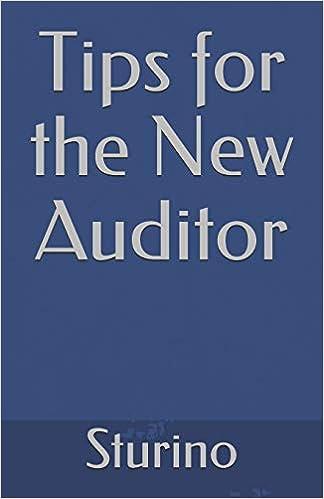Question
2-3 paragraph response Ratios are another amazing way to notice variances in assets, liabilities, income, and expenses. There are tons of different ratios we could
2-3 paragraph response
Ratios are another amazing way to notice variances in assets, liabilities, income, and expenses. There are tons of different ratios we could look at but lets take a couple and examine them for Simply Yoga. Take a look at their balance sheet.
Current Assets: Cash 9550 Accounts Receivable 900 Prepaid Expenses 1100 Total Current Assets 11550 Property and Equipment: Yoga Props (less accum depr) 1500 Total property and Equip. 1500 Total Assets 13050 Current Liabilities: Accounts Payable 710 Payroll Taxes Payable 672 Payroll Taxes Payable 1382 Total Current Liabilities Long Term Liabilities Loan Payable 6500 Stockholders Equity Common Stock 1000 Retained Earnings 4186 Total Equity 5168 Total Liabilities 13050
Lets talk first about the working capital ratio. The formula is:
Working capital= current assetscurrent liabilities
$10,168=$11,550$1382
So, this shows that Simply Yoga has plenty of funds to pay current liabilities, which is a good thing! But, it also shows that they are holding more funds in a very liquid account, which may be better used to pay off any higher interest debt, such as their loan payable. This is an area for review, right?
The current ratio is another way to look at the ability of a company to cover short term debt.
Current Ratio = Current assets/Current Liabilities
8.36=$11,550/$1,382
What this tells us is that Simply Yoga has enough current assets to cover their current liabilities 8.36 times. Again, this is a good thing, unless they are paying a crazy amount of interest somewhere else. Might that cash be better used to pay off that loan they have sitting on the books? What are your personal thoughts and why?



Step by Step Solution
There are 3 Steps involved in it
Step: 1

Get Instant Access to Expert-Tailored Solutions
See step-by-step solutions with expert insights and AI powered tools for academic success
Step: 2

Step: 3

Ace Your Homework with AI
Get the answers you need in no time with our AI-driven, step-by-step assistance
Get Started


